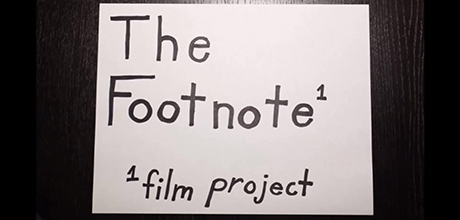When Zach Gorelick, B.A. ’13, tells people he was born with club foot, he’s often met with bewilderment.
The birth defect causes one or both of a person’s feet to turn inward into the shape of a golf club. Eighty percent of people living with club foot come from poorer nations, where paying for treatment can be a challenge. Untreated club foot results in difficulty walking and often limits a person’s ability to participate in strenuous physical activities or labor.
Treatment is easy to get in most developed countries. Because club foot is corrected when patients are babies, many people have no idea what the condition is or what happens if it goes untreated. Mr. Gorelick is on a mission to change this.
The recent graduate partnered with his girlfriend, Hannah Silverstein, to make a documentary that will bring club foot to global attention. Their film will investigate how the condition is treated in the U.S., New Zealand, Ghana and Vietnam. Already, they’ve received an outpour of support from clinics, doctors, nonprofit organizations and families dealing with club foot.
“There’s an enormous club foot community, and I wanted to give back to people I share this condition with,” Mr. Gorelick explained. “We both feel really strongly about this issue, and it’s extremely personal for me.”
Mr. Gorelick had corrective surgery to realign the bones in both of his feet when he was just an infant. Without surgery, he might not have been able to walk. Despite the success of his treatment, his experience hasn’t been pain-free.
“This isn’t the type of treatment where you’re treated once and then you don’t think about it again. I still have daily pain in my feet. I can’t run or play a lot of sports. It’s restricted me pretty heavily, but I still understand I’m light-years ahead of people who can’t get any treatment at all,” he said.
Mr. Gorelick and Ms. Silverstein met during their junior year of high school in North Carolina. An active athlete, Ms. Silverstein was a swimmer and played tennis. But it wasn’t as easy for Mr. Gorelick to participate in the same activities.
“I always felt it was unfortunate that Zach had to miss out on playing on a team and all the values that come from that,” she said. “It goes deeper than not being able to run in gym class.”
While she was a student at Georgetown University, Ms. Silverstein traveled to Ghana for a research project as part of her international health major. Again and again, she came face-to-face with people of all ages affected by club foot.
“I have these pictures in my mind that I go back to: A little girl sitting on a mat and her family going about their normal business while she just sits there. People crawling on their knees,” she remembered. “It showed me how important this is internationally.”
Mr. Gorelick always knew he wanted to raise awareness of the condition that had affected his life so deeply. The pair did some research and tried to find documentaries where they could learn more about club foot. When they realized there weren’t any, they took matters into their own hands and conceptualized a film that would tackle the subject. They began fundraising, promoting the film and drafting preliminary plans. Mr. Gorelick, who is a graduate of the School of Media and Public Affairs, said he’s been able to attract attention and publicity for the film directly through skills he learned at GW.
Mr. Gorelick called the experience so far a “whirlwind.” He connected with the Ponseti International Association, an organization that works to make club foot treatment more accessible. They advocate the use of the Ponseti Method, a nonsurgical procedure that utilizes casts to guide bone growth until the condition is corrected. The Ponseti International Association’s centers in Iowa will be among the first places Mr. Gorelick and Ms. Silverstein record footage.
They are also collecting funds to shoot internationally. In New Zealand, a country with an unusually high number of club foot cases, the couple plans to document how indigenous populations access treatment. They’ll study Vietnam’s united efforts to address the problem (the country has a national club foot program), and look at the support structures of patients in Ghana.
The two have much work ahead. Ultimately, they want their movie to reach as many people as possible. Mr. Gorelick said he is eager to work on the project until they reach their goal.
“I can’t feel anything but excitement. We were both just overwhelmed to see the amount of support we got so quickly, and it’s been pretty amazing. There haven’t been any boring days in this process,” he said.
To donate to the Footnote Film Project, visit http://fundly.com/the-footnote-film-project?.


